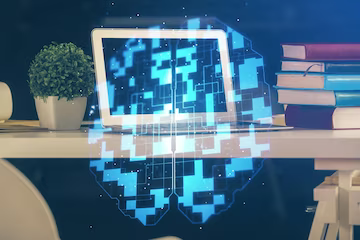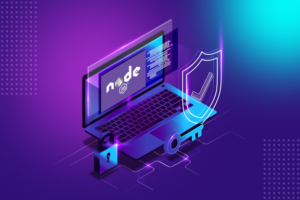Blockchain in Education: Applications, Difficulties, and Illustrations

The internet and digital learning are causing rapid changes in the education sector. Blockchain technology is one of the most recent developments in the field. Blockchain technology and cryptocurrencies like Ethereum and Bitcoin are frequently linked. But this is just the tip of the iceberg. In essence, a blockchain is a digital record that distributes and copies transactions across all of the network’s computer systems. To put it simply, every block on the blockchain is a list of transactions, and each new transaction is noted on the ledger of each participant.
With this technology, people can transact with one another directly without the use of banks, governments, or other intermediaries. But you must wonder how blockchain protocol development technology may be applied to education. Let us examine the function of blockchain in education, along with some instances and issues related to implementation.
Why is blockchain used in education?
Blockchain is the first thing that springs to mind when discussing security. Education is also not immune to data breaches. Cybercriminals now have a greater desire for student data that contains less financial information. Furthermore, the issue of student authentication at educational institutions has grown significantly since phony identities and records are being created through breaches. In this sense, concerns about protecting students’ privacy increase with the amount of digital student data.
Although verification is restricted to higher education, it has further uses. I am defending employers against someone who falsely claims to have a degree but does not would be a fantastic example. Blockchain technology can be an effective tool in the workplace to combat phony credentials and degrees. These are some instances of blockchain-based educational use cases that numerous establishments have already put into practice.
Applications of blockchain technology in education
Blockchain technology has several advantages for schooling. Institutions are already investigating blockchain applications in education due to their potential benefits. Let’s examine a few applications of blockchain technology in education:
Maintaining Student Records
Keeping student records is the main application of blockchain in education. The immutable ledger that blockchain generates revolutionizes student record management. Every input is kept as a block in the chain, regardless of whether it relates to extracurricular activity, attendance, or academic achievement. These records are authentic and unchangeable once they are added, guaranteeing their legitimacy. It improves the trust that exists between students and educational institutions by offering a safe and dependable means of storing and sharing a student’s academic history. Moreover, students can expedite admissions and employment applications by simply sharing verified data with companies and other educational institutions.
Easy-to-access, safe electronic transcriptions
Blockchain technology is also being used in education for secure transcripts. Academic qualifications are available in a safe, digital format with an e-transcript on the blockchain. A student’s academic history, including courses taken, grades received, and certificates, is shown in full on their transcript. Transcripts made tamper-proof by blockchain technology lower the possibility of fraud and deception in the educational system. Both students and institutions save time and effort when procedures like verification for graduate programs, licensing boards, or prospective employers are made simpler by accessibility and security.
digital badges
People frequently possess extra abilities in addition to their certificates. If a third party confirms these abilities and grants the badge, it becomes straightforward to demonstrate them. A digital badge that is generated and validated using blockchain technology might stand in for a certain ability, achievement, or skill. Compared to traditional degrees, these badges—which are typically obtained through online courses, workshops, or real-world experiences—offer a more thorough picture of a person’s abilities. People may demonstrate their wide range of abilities by sharing, confirming, and transferring them with ease across several platforms. Thus, a candidate’s abilities can be better understood by employers, possibly leading to new job prospects.
Systems for Automating Education
Building e-learning systems with blockchain technology is becoming more and more popular in the sphere of education. Smart contracts enable automated learning systems enabled by blockchain to optimize educational procedures. These contracts can carry out activities like assignment grading, monitoring course progress, and even customizing learning paths according to student success. In addition to saving teachers time and easing their administrative workloads, automation also provides pupils with individualized learning opportunities. By adjusting information delivery to suit various learning styles and speeds, adaptive learning systems can enhance overall educational outcomes.
Managing big files on a budget
Because blockchains are decentralized, they are the perfect tool for storing big educational assets like simulations, research papers, and movies. These files are stored throughout a network of nodes rather than on pricey centralized servers, which lowers storage costs. Furthermore, data availability and integrity are guaranteed by the distributed and unchangeable nature of blockchain, making educational resources easily accessible worldwide.
Publishing and copyright protection
Content can be encrypted and timestamp-tagged with blockchain technology, protecting intellectual property. Smart contracts and digital signatures allow authors to claim ownership and rights over their creations, limiting unlawful use or plagiarism. Authors are therefore in charge of how their work is used, licensed, and paid. In the field of education, this atmosphere encourages creativity and innovation.
Payments with cryptocurrency
The education sector is just one of many industries that have already embraced cryptocurrency payment methods. The use of cryptocurrencies for payments in the educational sector has several benefits. The use of middlemen is eliminated by blockchain-based payments, which lowers transaction costs and speeds up international transaction processing. Additionally, it improves the security and transparency of financial operations by guaranteeing the safe and traceable payment of tuition, educational materials, or overseas programs.
The adoption of blockchain in the education sector presents challenges
The application of blockchain technology in the education sector is not without drawbacks, though. These are a few of the difficulties:
- A deficiency in comprehension and knowledge: The adoption and usage of blockchain technology are limited since the education sector is mainly ignorant of its potential applications.
- Scalability problems: Scalability of a blockchain becomes problematic as data and transaction volume rise. There is a chance that the network will slow down, which will affect processing speed and effectiveness.
- Combining with current systems: Blockchain technology integration into current educational platforms and processes can be difficult. Compatibility problems, data migration, and the requirement for staff training and assistance make implementation challenging.
- Infrastructure and cost: Implementing blockchain technology in education will need spending money on hardware and software resources. Educational institutions could find it challenging to pay for the initial setup and upkeep.
- Data security and privacy: Blockchains’ transparency and immutability may collide with the requirement to safeguard private student information. Maintaining data security and striking a balance between privacy laws and transparency can be challenging. Legal and regulatory concerns about data ownership, intellectual property rights, and privacy rules and regulations may make it more difficult to deploy blockchain technology in education.
- Setting a benchmark: Blockchain technology may not fully realize its potential if interoperability and collaboration across educational institutions are restricted by a lack of established protocols and frameworks.
- Adoption as well as cultural shift: Blockchain technology adoption in education will require a cultural shift and acceptance of new procedures and practices. Reluctant to adapt and embrace new technologies can make it more difficult to successfully integrate blockchain technology into education.
Despite its difficulties, blockchain technology is becoming more and more necessary in the industry. To successfully integrate blockchain technology into your company, you can engage blockchain engineers.
Blockchain in education examples
Although blockchain technology is still in its early stages, it has already shown promise in boosting student involvement, accountability, and transparency. As a result, teachers are using technology to completely transform the classroom. To help you better grasp how blockchain technology is being used in education, here are three instances.
Appi
Through the use of blockchain, smart contracts, and machine learning, APPI enables professors and potential students to validate each other’s academic qualifications. The users fill out their academic CV, which contains their transcripts and educational experience, after creating a profile. After that, APPI uses blockchain-based technology to encrypt user data and do background checks.
Blockcerts
Learning Machine developed Blockcerts, an open standard platform for generating, distributing, and confirming blockchain-based certifications, with assistance from the MIT Media Lab. Businesses can detect fraud and validate the authenticity of papers by storing academic transcripts and credentials on a blockchain. To provide unchangeable insight into prior academic accomplishments, a Blockcerts blockchain can also store academic achievements, such as grades, transcripts, and certificates.
ODEM
A marketplace for education powered by blockchain, ODEM connects professionals, instructors, and students with pertinent courses and resources. Smart contracts are used by educators and students to choose courses that will enhance their professional and educational backgrounds. On ODEM’s ledger, instructors and students are acknowledged for the courses they have taught and taken.
Conclusion
Blockchain technology has a wide range of uses in the education sector, from enabling simple access to transcripts and digital badges to safely preserving student records. The potential for adoption to improve accountability and transparency in the education industry is demonstrated by initiatives like ODEM, Blockcerts, and APPI, despite obstacles like scalability and interaction with current systems. Notwithstanding obstacles, the potential of blockchain technology to transform identification and data management points to a bright future for transforming the way we approach credentialing and education.








